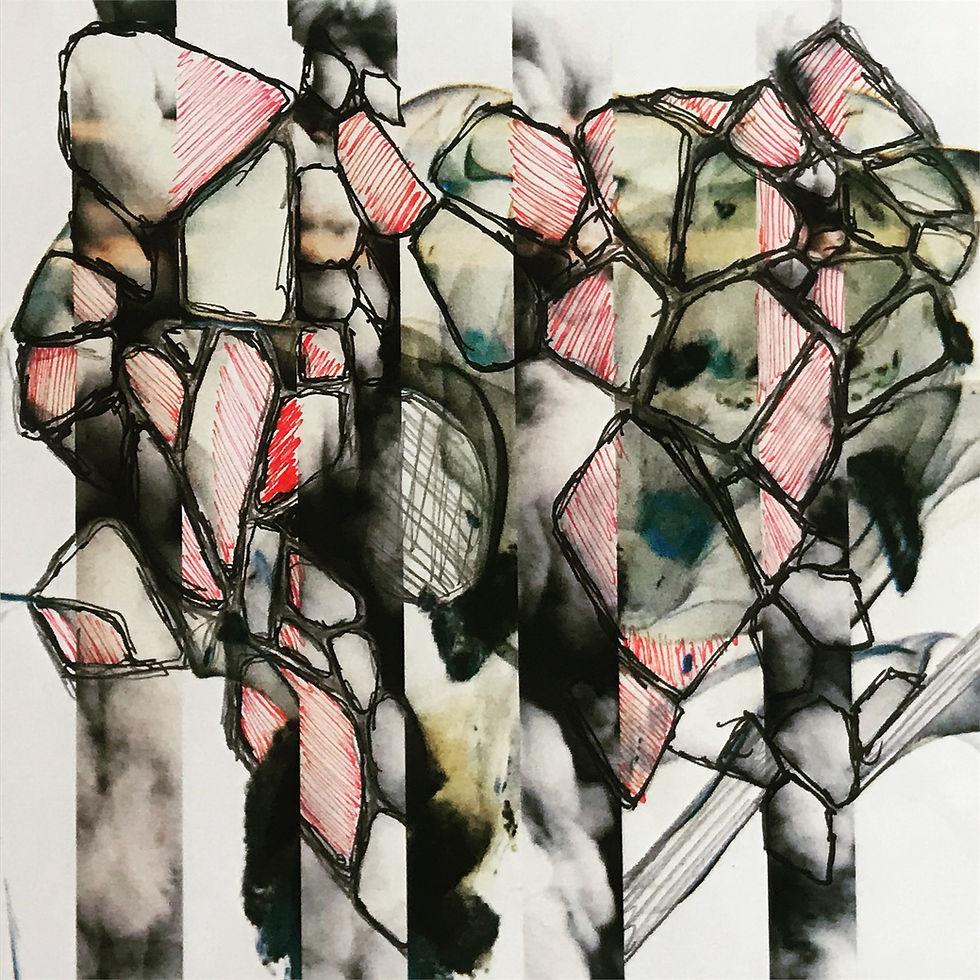Aesthetic Tuning :: Colony
- ~rooks /|\

- Oct 15, 2019
- 3 min read
A question I have been exploring for a long time as a designer is, how do we reveal, accept, and filter our aesthetic influence without direct copying or feeble translations? While I was a student (and to some degree still), i would resist looking at precedence or architectural examples during the design of a project to avoid contamination of my thinking. This was not a position against learning from other works, which I also did a lot of through research papers, history classes, sketch trips, and summer / winter break reading (looking at pictures and drawings). It was an anxiety about creativity, a purity of concept and ideation from a process of the project. As a teacher I have leaned that this was perhaps quite naive, as I see my students struggle to extract much influence from even highly focused precedent studies, much less and interesting drawing or project screaming past on the internet.

One of the strategies I am exploring to resolve this anxiety and conflict of influence and invention has been through a process of Aesthetic Tuning through collage-drawing experiments. As part of the early stages of a design process, I like to gather a broad visual context through associations with the site, culture, biases, impressions, and personal interests hovering around the project. To find a way into the work, I generate a series of Aesthetic Drivers as convergences of Organization :: Qualities :: Tectonics. For the image above, we were exploring the visual potential of a Viscous :: Deep :: Phasing Scape. A virtual space of image , drawing, and language that captured the project's proximity to the viscous Mediterranean Sea, the geological depth and isolation of an island, and the phasing movement of a local common Jellyfish. These initial impressions drive a search for imagery, which is tuned through a series of procedural collage studies to de-contextualize the content while superimposing the inherent organizations and qualities of the inputs.



The Jelly and Rolling Clouds phase into each other through the Rollage technique. The rhythm of the images swap position to expand-contract through both aesthetic contexts. The procedural Rollage technique offers simple parameters to integrate ideas from multiple images, there are also near endless possible rhythms and organizations that can drive the superposition. These outputs can be generated and evaluated quickly to challenge initial reactions to the site / context of the project, opening up a space for deeper exploration on less stable and more complex terms. A process of visual richness and conflict. While this particular Aesthetic Driver pushed much of the projects organizations and formal ideas, there were many others just as rich for future investigation, each perhaps worth its own post.

I often oscillate between analog and digital manipulations. Out of a practical desire to draw from the image, I inverted the colors and contrasts to work with a pen and trace paper.

Colonizing the territories of the de-contextualized Aesthetic Drivers.

Extracting and developing systems of integration - site :: drawing,:: architecture

A macro level organization emerges from the Aesthetic Tuning of the project, soft clustering volumes connected by flowing meandering paths, texturing the sloping fabric of the site.
The collages also drive many other organizational positions of the project, extracted from layers of drawing and analysis in a negotiation between the prescribed programmatic parameters and the friction of influence.


Revealing relationships, searching for a language of mediation between thoughts and things.

Reterritorialization (the influence of Deleuze et Guatari and Columbia GSAPP in the early 2000s)

A map of new territories, an expedition of discovery, a search for meaning.

A network of relationships, regions, textures, isolation and clustering inform the layout and concept of program and site organization. These striated bubbles coalescing to form colonies of spatial aggregations, reaching out to connect with neighbors and subvert the fractured landscape. The initial organizations of the elements for the project were sampled from this drawing and aligned with program and scale to further the design.

Unit Organization



Axial scalar clustering and geometric subtractions - poche - ground - thickness

A colony of artist habitats projecting from the topography out to the endless horizon of the island citadel.

Colonizing the steep landscape with a meandering joy in isolation with the environment of an island.



Architecture is an act of colonization of a territory. Integration or destruction is a choice of this act, but the environment is forever changed by the introduction of new agents within the territory.




![Comics Beyond Fiction :: [Trans-] FICTION 2020](https://static.wixstatic.com/media/dc9b92_ced3d4dc90354df2af26b92211adbb58~mv2.jpg/v1/fill/w_980,h_597,al_c,q_85,usm_0.66_1.00_0.01,enc_avif,quality_auto/dc9b92_ced3d4dc90354df2af26b92211adbb58~mv2.jpg)

Comments